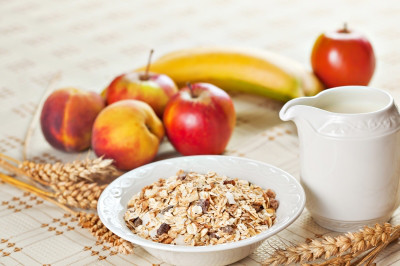A survey last year flagged up that 14% of children eat no breakfast before school.1 This taps into a real problem amongst young people today, that meals are skipped and the wrong foods chosen to substitute them.
Not only do we already have a ticking time bomb with regards to childhood obesity and the health problems, which will cripple healthcare systems and cause children today to die before their parents, but we have increasingly unhealthy attitudes towards food. We are bombarded by media trying to sell us diet products and unattainable and airbrushed glossy selves at the same time as tempting us to buy glossy high fat and high sugar food products.
The World Health Organisation considers childhood obesity to be ‘one of the most serious public health challenges of the 21st century’. According to its figures, ‘in 2010 the number of overweight children under the age of five is estimated to be over 42 million.’2
So, how can breakfast help?
It has long had the reputation of being the ‘most important meal of the day’ but why? A healthy breakfast has been linked to many health benefits including the maintenance of a healthy weight, improved concentration and performance at school and increased strength and endurance in physical activity. There have also been benefits noted to more specific skills such as hand-eye coordination and problem solving.3
A healthy breakfast has been linked to overall healthier food choices. This same principal can also be applied to ensuring that children eat regularly so that their blood sugar levels remain stable without huge gaps where blood sugar levels plummet and then spike after a high sugar snack only to cause a sugar crash shortly after. Sugar crashes can lead to fatigue and irritability, always something to be avoided where possible with children! Here are some suggestions which can be used at breakfast or snack time. Even better they can be made fun with a minimum of fuss:
1) Boiled egg and whole grain toast soldiers (small rectangles of toast). Arrange them to make an array of funny faces. The soldiers can even march up the side of the egg before getting stuck in the yolk!
2) Fruit face toast. Use pieces of fruit to create faces on peanut butter on wholegrain toast.
3) Eye ball soup! Kids love gore so some gruesome grapes in yoghurt always go down a treat.
4) Children love feeling involved in what they are going to eat so allow children to experiment to come up with their very favourite fruit smoothie concoction. Use milk or orange juice as a base.
5) Rather than baking cupcakes, why not try breakfast muffins using honey rather than sugar and seeds and bran to slow digestion. Perfect for a quick breakfast the next day (if you can resist until then!)
6) Secret pockets! Put fillings such as cheese and ham into pita breads and see if your child can guess the filling. The protein in cheese, ham and eggs will also help keep children full for longer.
7) Fairy tale porridge. Goldilocks couldn’t resist the smell of the porridge from The Three Bears’ house. Use honey and dried fruit as natural sweeteners. Try making it “just right”! Not too hot, not too cold, not too salty and not too sweet, just like in the story!
8) Have a bowl of fruit on offer for children to jazz up or supplement their breakfast with.
If you look at the advertising of most high fat, sugar and salt breakfast foods, they are centred on being fun choices. There is no reason to only offer healthy foods that are not fun. Inject fun into your healthy options and then healthy won’t have to just mean “boring”! Some of these options need not take more than a couple of minutes to prepare especially if some things can be got ready the night before. We must remember too that children are born imitators. If they see you sitting down to a healthy breakfast rather than skipping it or grabbing a donut on the go, they will be more inclined to follow your example.
What are your favourite breakfast or snack foods? How do you make them fun and appealing? We would love to hear your ideas.
1) http://onlinelibrary.wiley.com/doi/10.1111/j.1467-3010.2012.01973.x/abstract
2) http://www.who.int/dietphysicalactivity/childhood/en/
3) http://www.webmd.com/diet/features/many-benefits-breakfast
Featured image: http://www.freedigitalphotos.net/images/Meals_g270-Bowl_Of_Muesli_For_Breakfast_With_Fruits_p151244.html


















